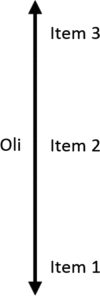Rasch Analysis for Instrument Development: Why, When, and How?
- PMID: 27856555
- PMCID: PMC5132390
- DOI: 10.1187/cbe.16-04-0148
Rasch Analysis for Instrument Development: Why, When, and How?
Abstract
This essay describes Rasch analysis psychometric techniques and how such techniques can be used by life sciences education researchers to guide the development and use of surveys and tests. Specifically, Rasch techniques can be used to document and evaluate the measurement functioning of such instruments. Rasch techniques also allow researchers to construct "Wright maps" to explain the meaning of a test score or survey score and develop alternative forms of tests and surveys. Rasch techniques provide a mechanism by which the quality of life sciences-related tests and surveys can be optimized and the techniques can be used to provide a context (e.g., what topics a student has mastered) when explaining test and survey results.
© 2016 W. J. Boone. CBE—Life Sciences Education © 2016 The American Society for Cell Biology. This article is distributed by The American Society for Cell Biology under license from the author(s). It is available to the public under an Attribution–Noncommercial–Share Alike 3.0 Unported Creative Commons License (http://creativecommons.org/licenses/by-nc-sa/3.0).
Figures








References
-
- Bond TG, Fox CM. Applying the Rasch Model: Fundamental Measurement in the Human Sciences, 2nd ed. Mahwah, NJ: Erlbaum; 2007.
-
- Boone WJ, Staver JR, Yale MS. Rasch Analysis in the Human Sciences. Dordrecht, Netherlands: Springer; 2014.
-
- Eggert S, Bögeholz S. Students’ use of decision-making strategies with regard to socioscientific issues: an application of the Rasch partial credit model. Sci Educ. 2010;94:230–258.
-
- Enochs LG, Riggs IM. Further development of an elementary science teaching efficacy belief instrument: a pre-service elementary scale. Sch Sci Math. 1990;90:694–706.
-
- Jüttner M, Boone W, Park S, Neuhaus BJ. Development and use of a test instrument to measure biology teachers’ content knowledge (CK) and pedagogical content knowledge (PCK) Educ Assess Eval Account. 2013;25:45–67.
MeSH terms
LinkOut - more resources
Full Text Sources
Other Literature Sources

